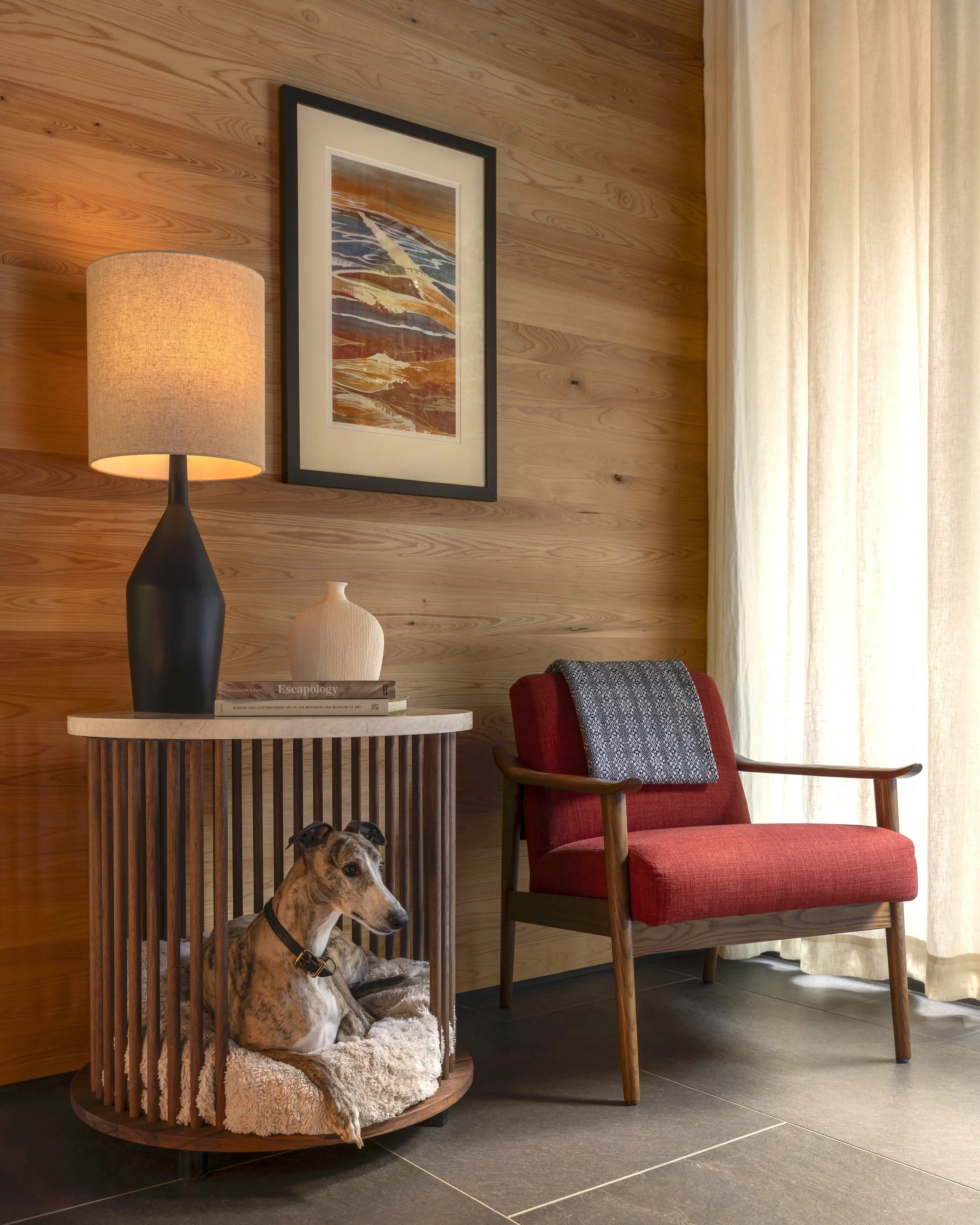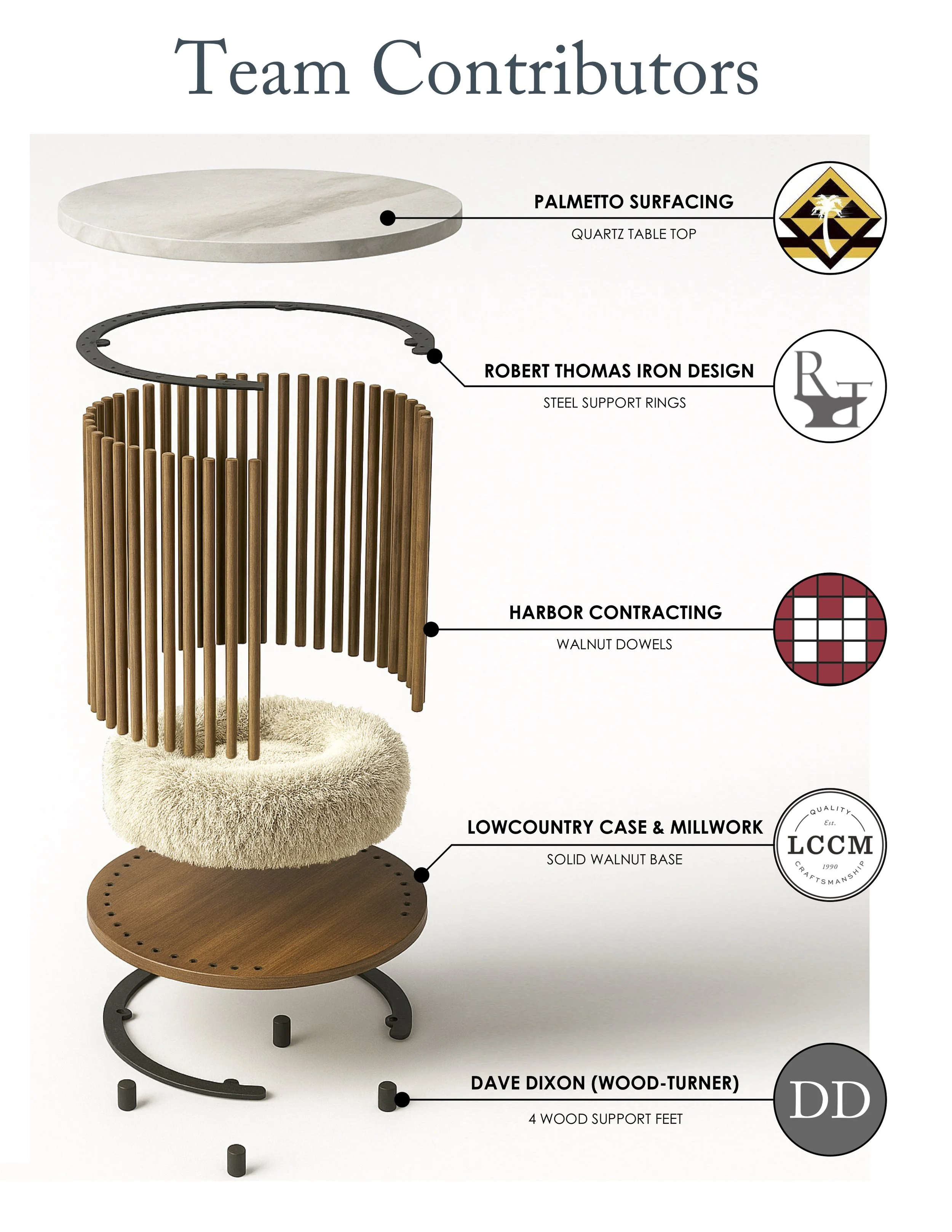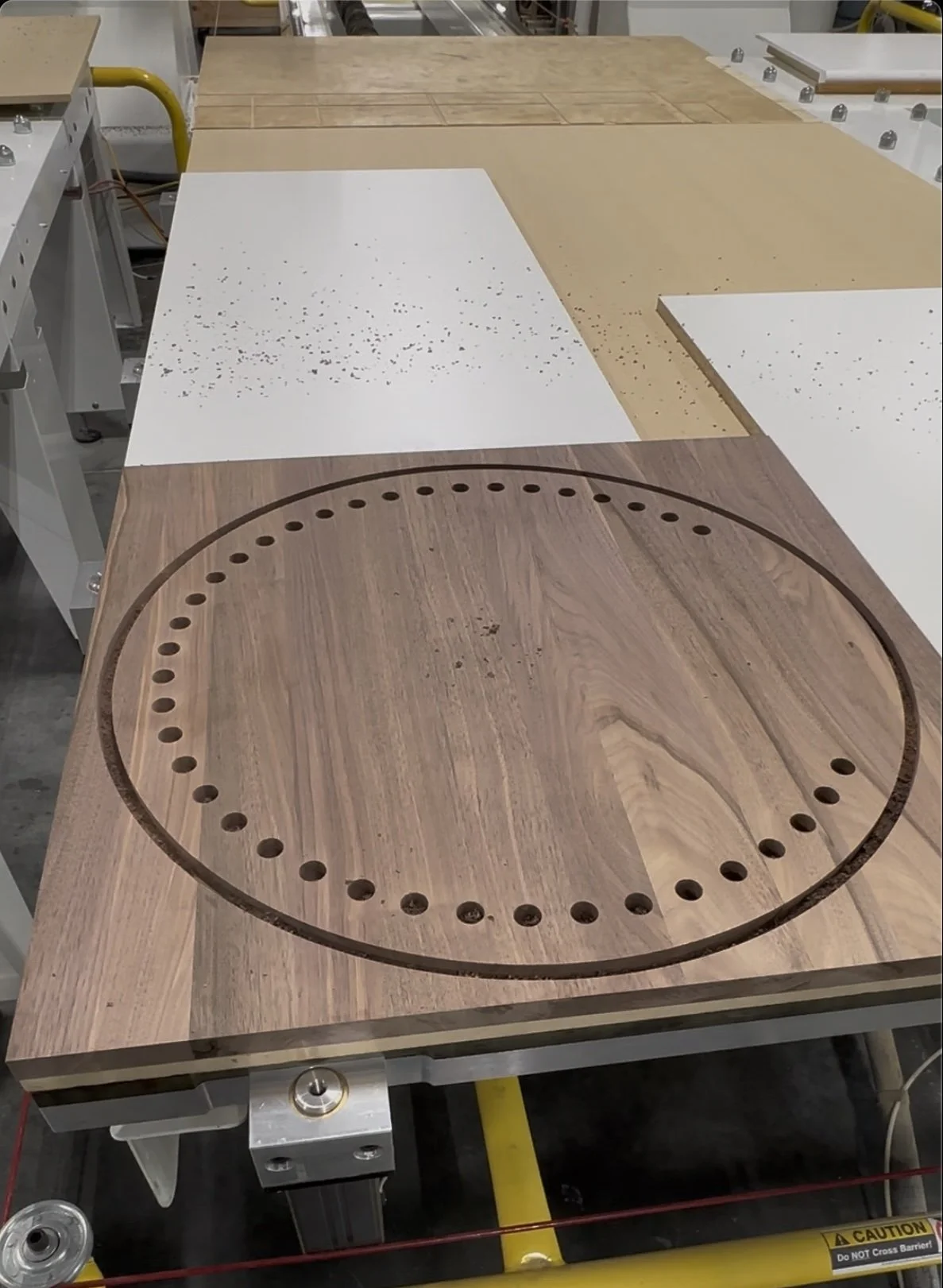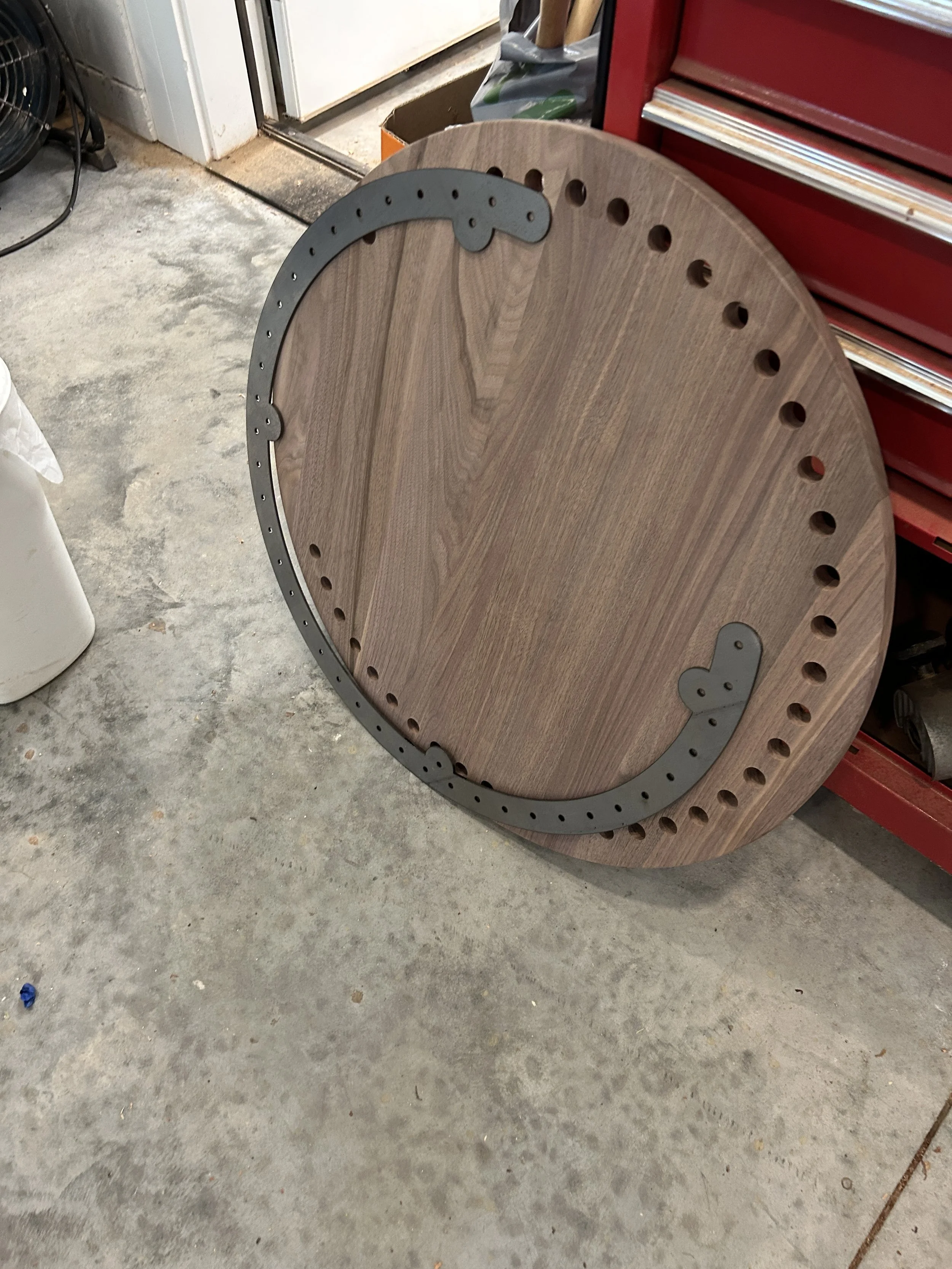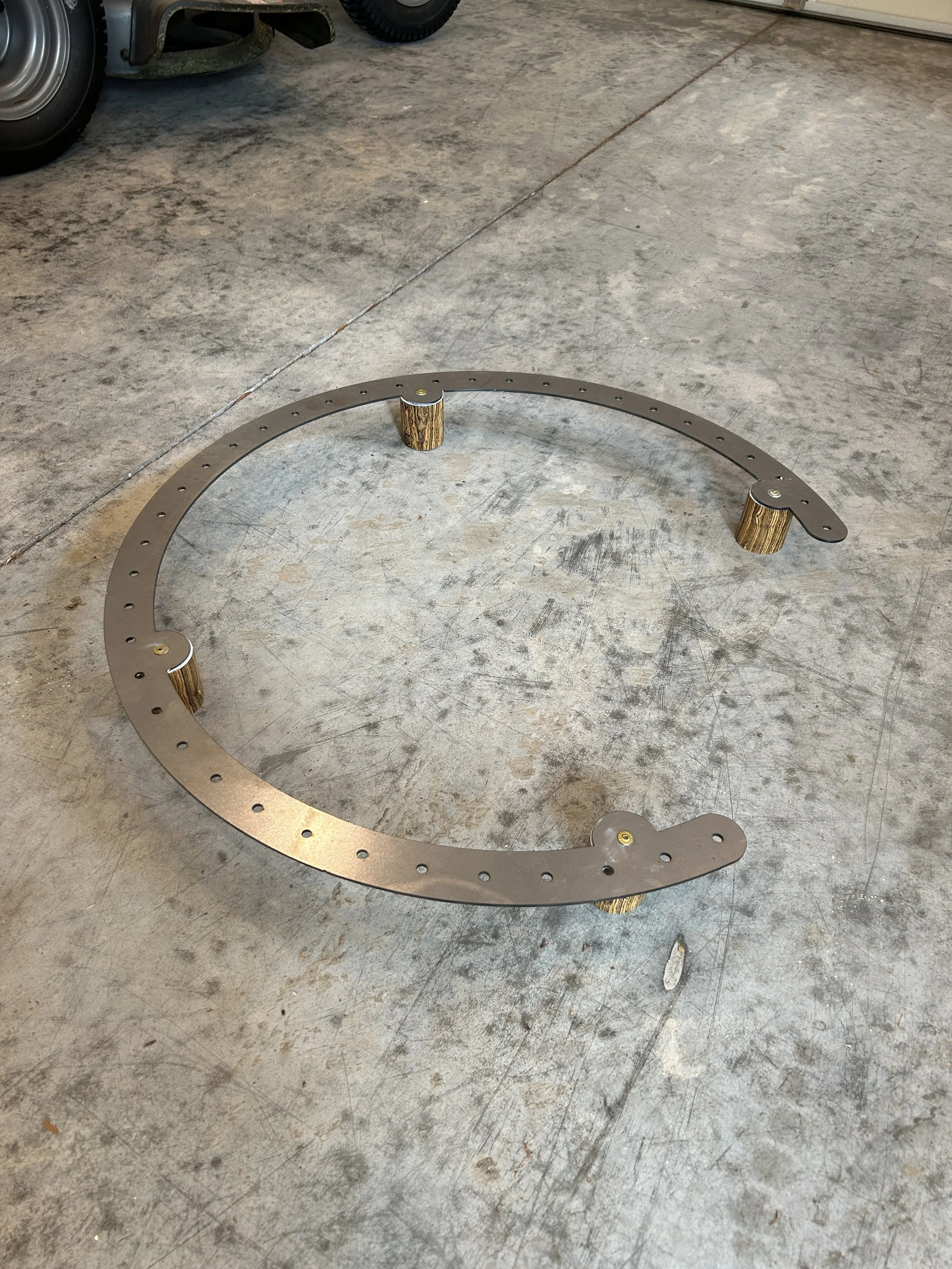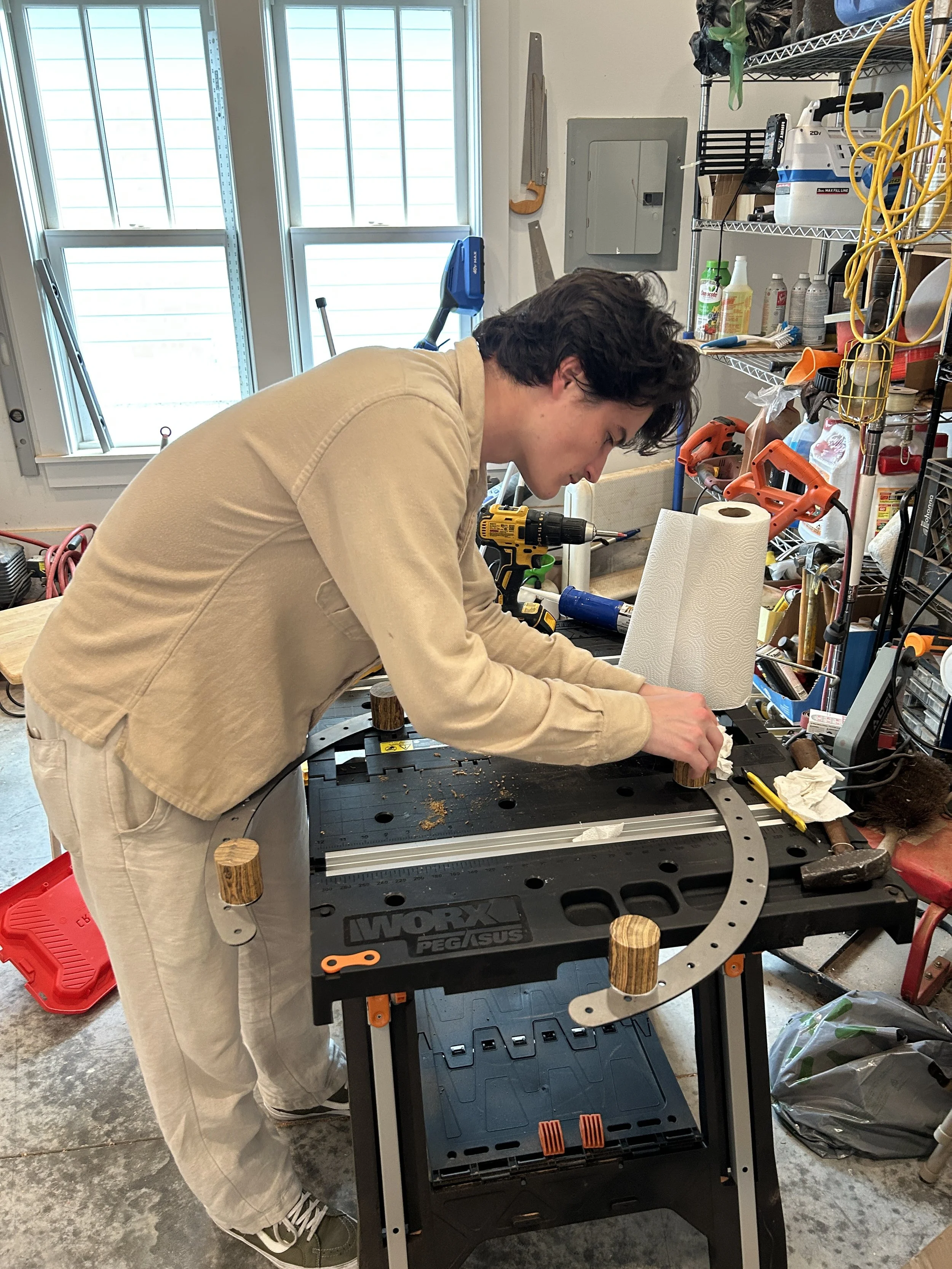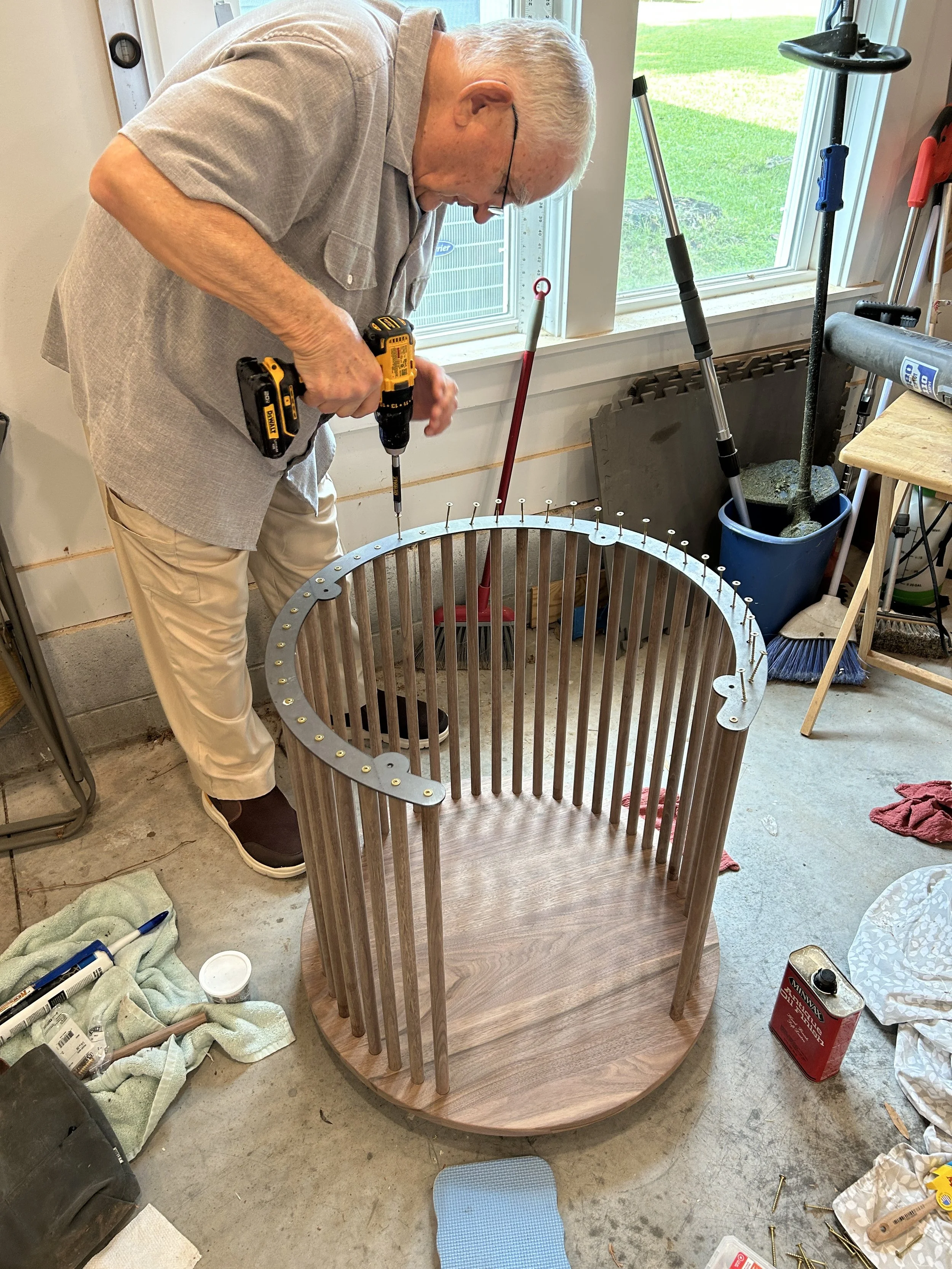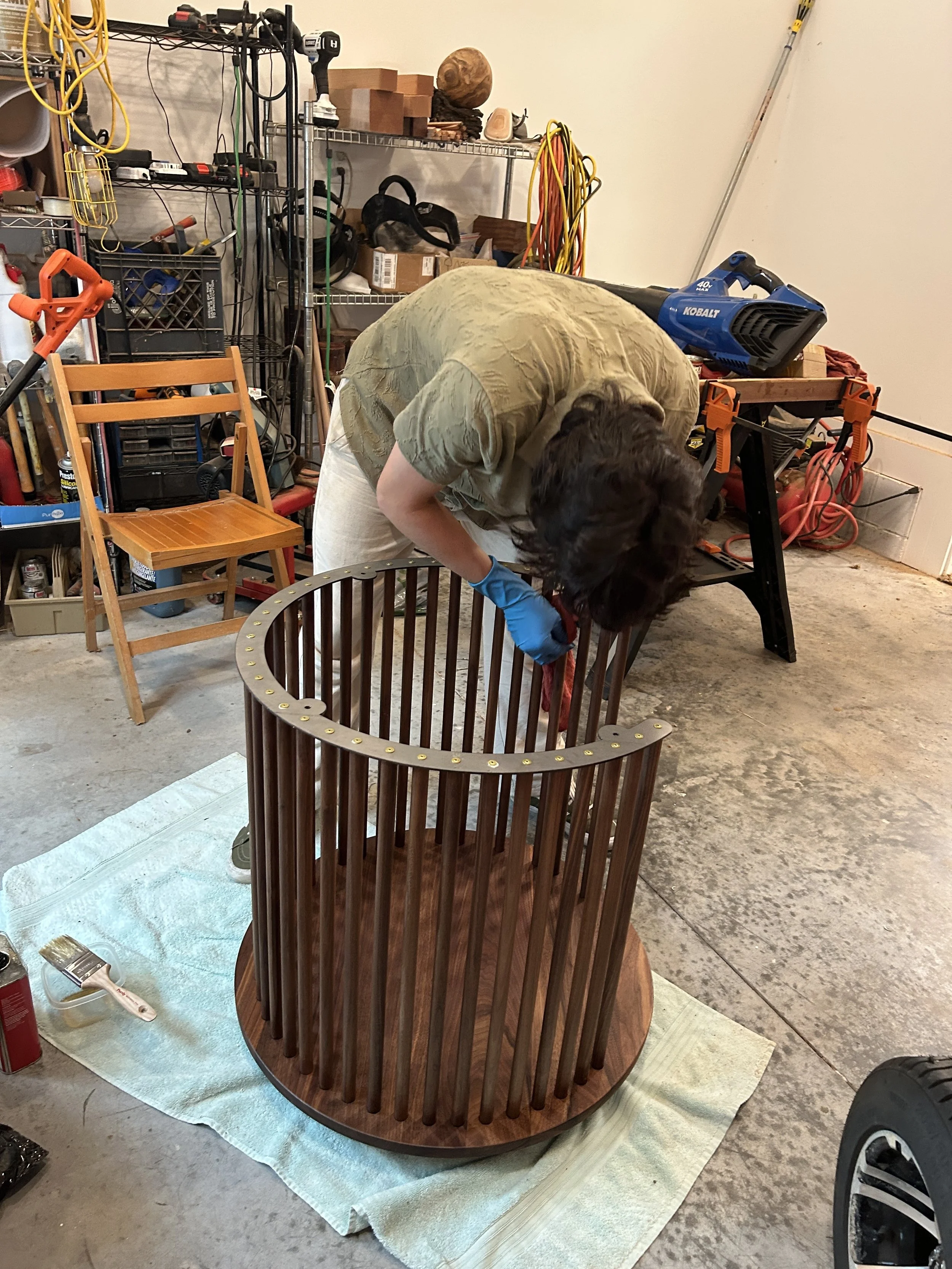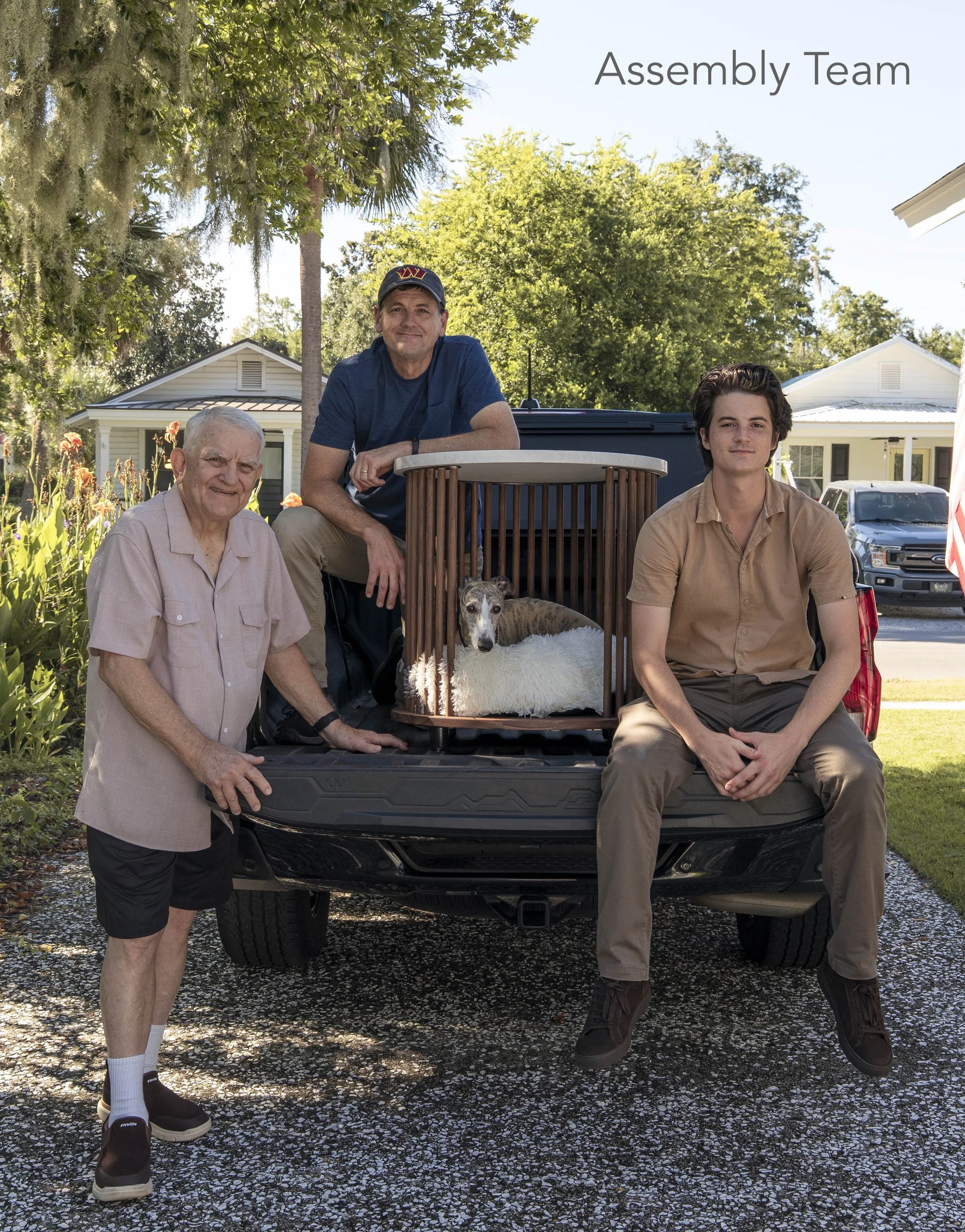It’s that time of year again when we get to mix some of our favorite things - architecture, product design, branding, and dogs - into a design competition entry. The annual Charleston Animal Society “Barkitecture” Doghouse Design Competition aims to blend innovation and design with the comfort and well-being of our furry friends, creating spaces that are both functional and stylish. The entries are currently up for auction and will be displayed at the “Emerald City Gala - Applause for Paws” fundraising event scheduled for Saturday 10/4 at the Gaillard Center in Charleston, SC.
Our 2025 doghouse design, “Dot” is an edited, refined version of last year’s design, “The Dottie”. This collection is intended to offer dual-function, furniture-quality designs to enhance and declutter your shared space. With a quartz top and solid wood construction, this piece can serve family pets and their loving families for generations. See the gallery below for renderings and production progress photos and note our amazing partners below that made it all happen:
Rush David Dixon IV Photography
Dave Dixon: Millwork / Assembly
Mr. Tibbits the Whippet: Model + Muse
The auction for “Barkitecture” doghouses is now live with proceeds going to The Charleston Animal Society. Click HERE to see all of the entries. Consider taking a look, bidding, or just donating if you can.
